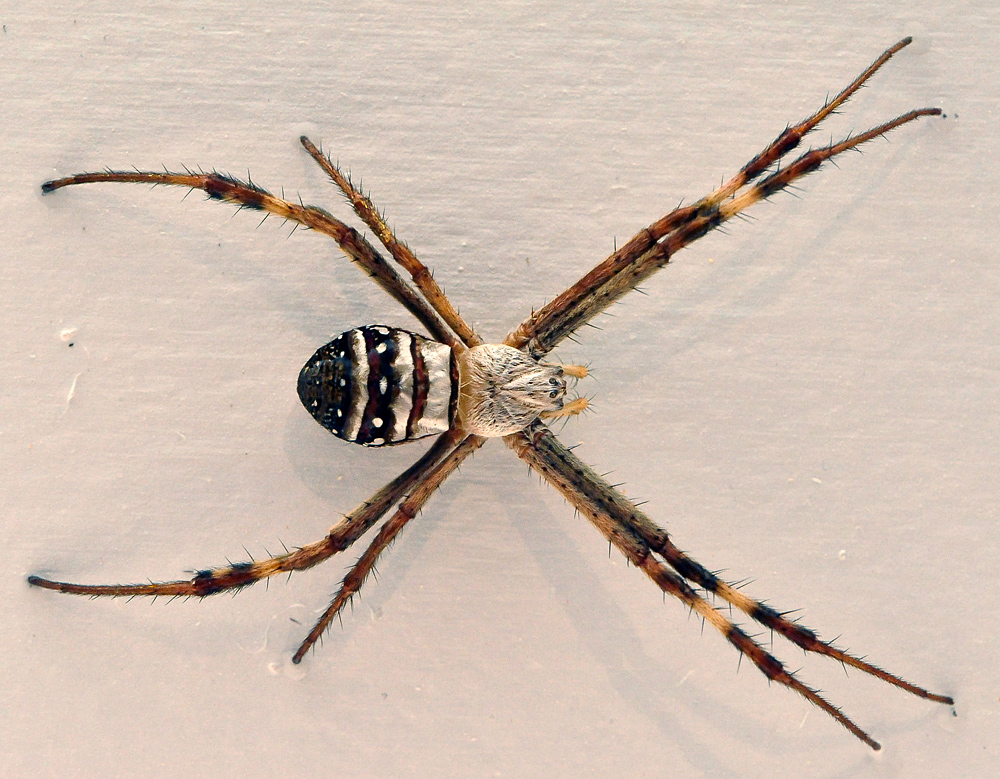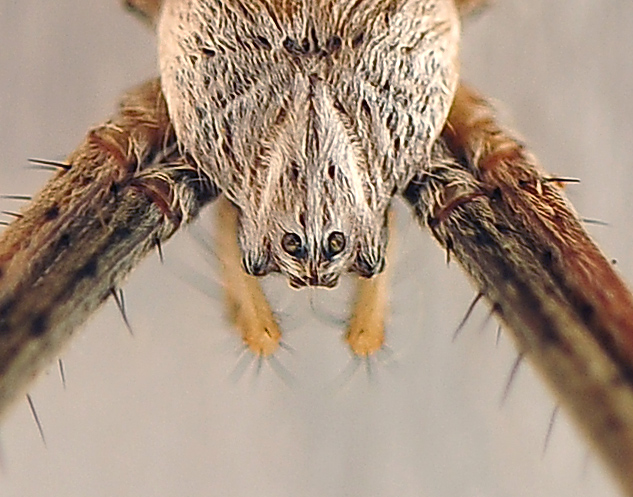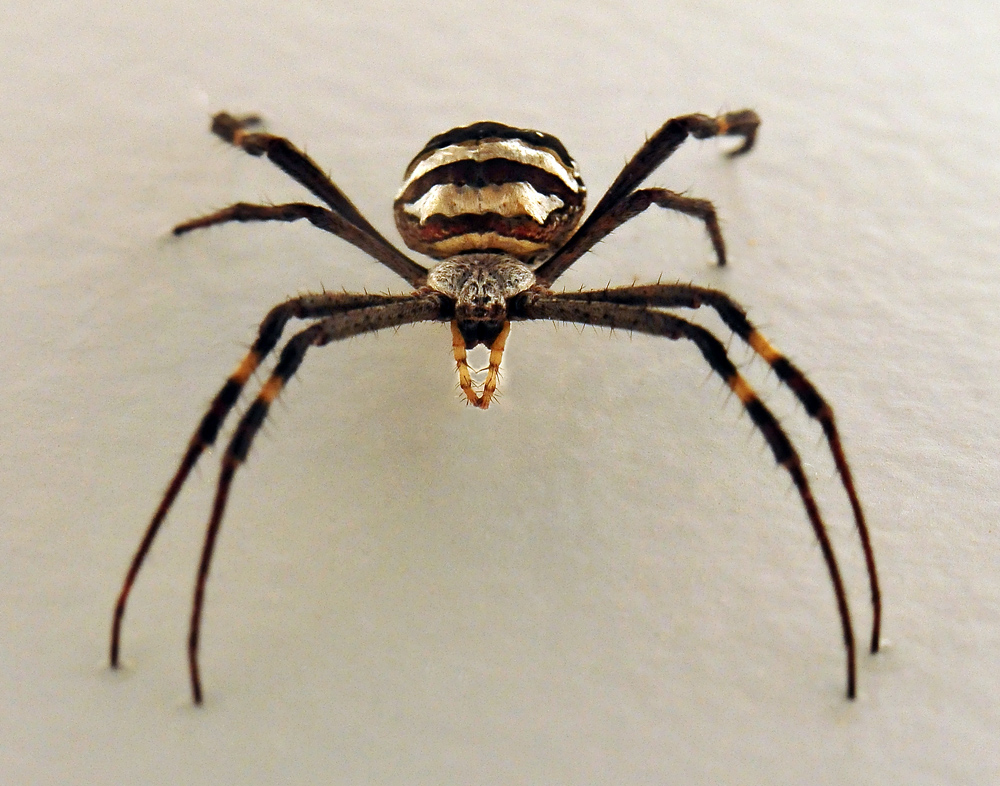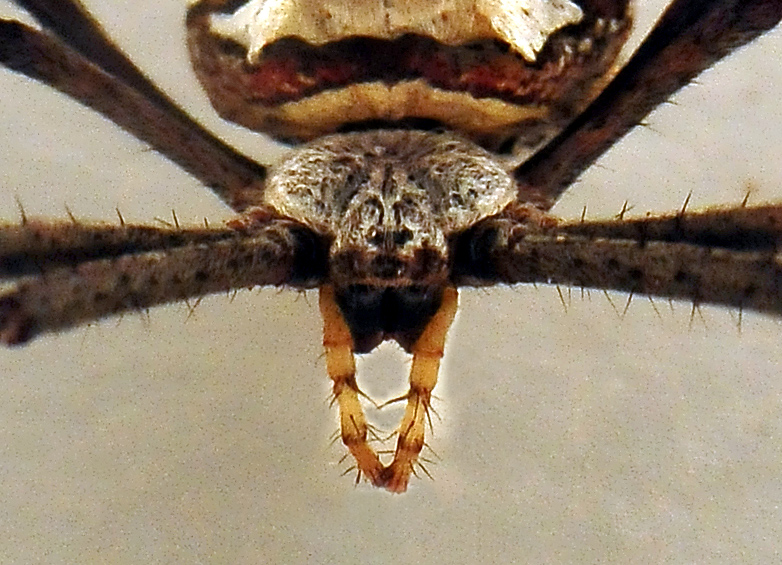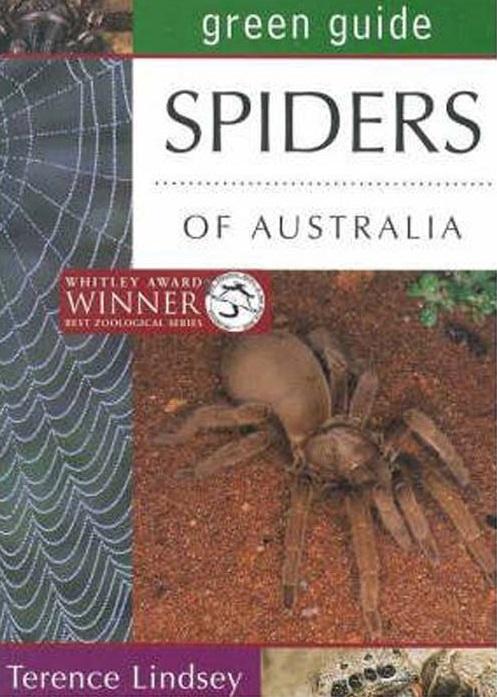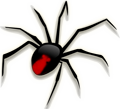
|
St Andrew's Cross Spider
Argiope keyserlingi
Family: Argiopinae (St Andrew's Cross Spiders and their allies). Some of the other species in this family are also called St. Andrews Cross spiders, however Argiope keyserlingi seems to be the most well known, and it builds the zigzag cross out of web which looks like an extension of its legs from a distance. Size: Male body 6 mm, female body to 20 mm Distribution: Warm regions, especially tropical coastal areas of Australia. Habitat: It makes a flat orb-shaped web usually about 1-2 metres above the ground. They like to be close to waterways where there are more insects. References: Brunet. Whyte and Anderson. Wikipedia About the St Andrew's Cross SpiderThis well-known spider sits in its web in an "X" shaped cross. It's perhaps the first spider I remember seeing in the garden when I was quite young. According to tradition, Saint Andrew was martyred (executed) on an X-shaped cross, rather than the usual lower-case "t" shaped cross used for crucifixion. Predators: Mantids (e.g. the preying mantis) and birds. Note that dead spiders usually fade in colour, so nearly all the spiders will look blacker or darker in colour in real life than they do in the photos of dead spiders from the museum.
Recommended ReadingSee Also
Australian Mammals Share This PageContent is copyright © Survive.au 2005-2025 All Rights Reserved. Terms of Use. Definitely read the disclaimer before trying anything from this website, especially including the practices and skills. This website uses affiliate links – this doesn't cost you any more, but I get a commission on purchases made through the website. As an Amazon Associate I earn similarly from qualifying purchases. |
